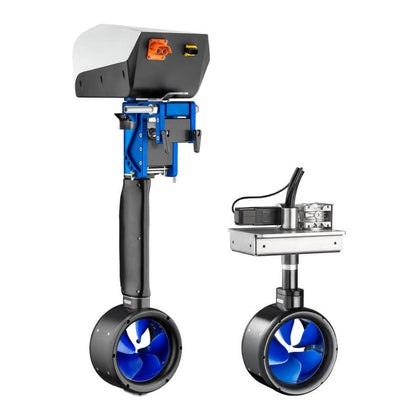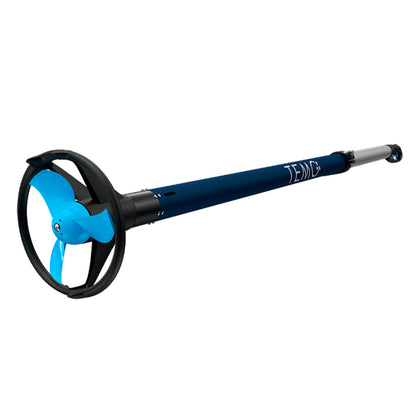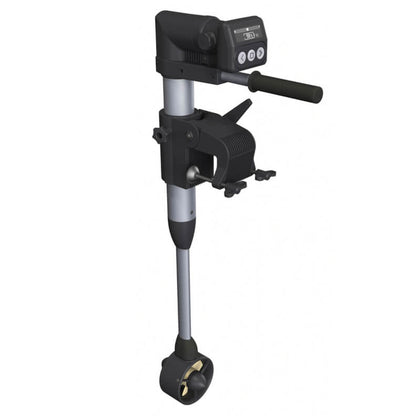Electric Outboards
Electric outboard is an alternative to the traditional internal combustion engines used to power your boat's motor. If you want to know all about electric outboards, you've come to the right place. Let's get started!
Introduction
As you might have guessed, trolling motors it's a type of motor designed to power your boating experience and for precise boat handling. The main difference between electric motors and other lies in how they're powered. Instead of burning gas or diesel (like conventional ones), they use electricity.
Uses of electric outboard motors
Small electric outboard, which has good starting performance, long running time and high efficiency, has been widely used in modern life. That type of outboard motor can be used in various places because of its lightweight and compact structure.
The quiet, clean running makes an electric motor a good choice for Fishing and Hunting, looking to stealthily navigate rivers and creeks and get through shallow waters. The quiet nature of these motors allows you to sneak up on the trophy without spooking them.
The electric outboard motor fits several vessels, ranging from sailboats to inflatable boats. You'll find a more prominent motor model as well as more minor variations. All of this depends on how much power you need to put out there.
Electric outboard motor advantages
The electric outboard motor is less harmful to our environment than a combustion engine and is much safer to use, as it does not have many moving parts or high-voltage components. Electric Outboards have deficient noise levels, unlike some other motors, and repair costs are far lower than combustion engines.
Most electric boat motors come with rechargeable, traditionally lithium-ion batteries and built-in protection circuits to be taken out on the water without any worries about being damaged by saltwater spray or saltwater leakage. As long as you don't get them wet inside, you should avoid corrosion damage caused by brine buildup that causes a short circuit.
Another benefit worth mentioning is that no fuel-related emissions and exhaust fumes are produced when using these motors! Electric outboards use electricity instead, so all you will see coming from them is clean, pure air!
Electric outboards disadvantages
Although electric outboards are quiet and easy to use, there are a few downsides to consider. Most models have a battery that lasts for 5-8 hours on a single charge, meaning if you're planning a fishing trip far from shore, it's essential to bring extra batteries.
Finally, because no internal combustion process to produce heat, electric outboards do not function when temperatures drop below freezing. They will work fine on warm spring days but are useless during early autumn or late winter. As with any motorized equipment, be sure you read and understand all manufacturer recommendations before attempting to start your motor in icy conditions!
It is also important to note that while most engines made today are designed safer from older counterparts - you should still treat engines like one would a live wire: with care!
How electric outboard motors work
While a conventional motor gets its power from gasoline and can't run without it, an electric propulsion system uses batteries as its energy source. The battery pack can be charged up via a DC power supply charger that connects to your boat's 12-volt DC system—your home or cabin, for example. Once it's fully charged (which can take between one and six hours depending on how much charge you need), you simply detach it from your boat and carry it with you like a suitcase.
You can then plug it into any standard AC outlet once you reach land. At which point, you just sit back and enjoy your trip! Your outboard would then go back to being an environmentally friendly device, which uses energy straight from the sun instead of sucking it into a gas engine.
Electric boat motors need regular maintenance to run at optimum capacity like most boats. The more time you spend on preventive care, the fewer you'll have to shell out for unexpected repairs later on.
Depending on how and where you plan to use your boat, regular maintenance can be as simple as changing your oil or topping off fluids every three months.
However, if stored in hot or humid areas, these needs may increase monthly. On top of all that, powerful electric motors tend to age faster than gas motors do. For example, if you don't use it often, change some fluids every six months instead of twelve. This will keep components working smooth while prolonging their lifespan by slowing deterioration that comes with neglecting maintenance work over a long period.
That said, there are no hard-and-fast rules; just make sure everything works before each trip, always check fluid levels and clean spots of corrosion immediately. Buy a waterproof case for tools, gauges and sockets. Keep screwdrivers separate from loose items like batteries, so you don't lose anything overboard during those inevitable splash-out incidents along the way. Also, invest in watertight bags designed to protect specific components from damage by water.
Conclusion
As you can see from our overview, electric outboard motors have a lot of benefits. Still, it's also important to realize that some significant drawbacks should be considered. These should be carefully weighed against your lifestyle, needs and expectations before deciding if an electric motor is suitable for you. Overall, though, with their many advantages and lower costs compared to a gas-powered engine – they may very well end up being your best choice!








